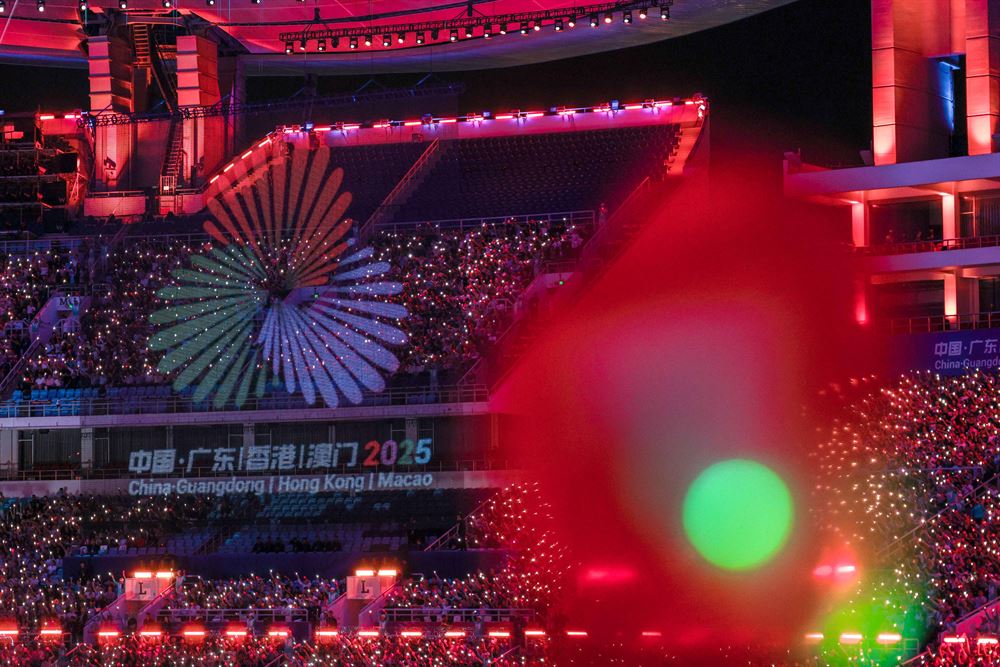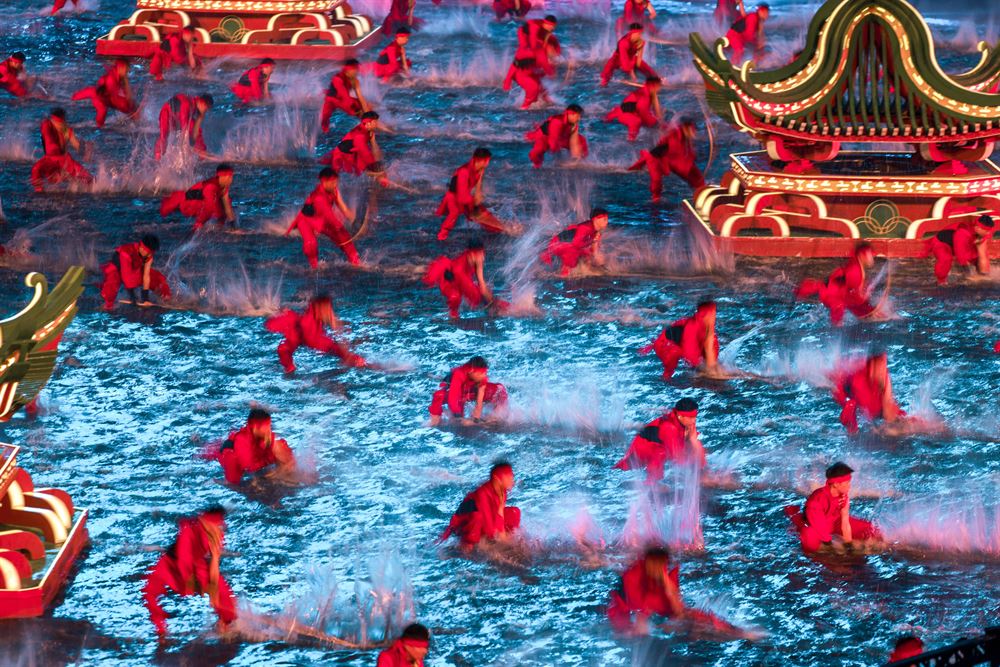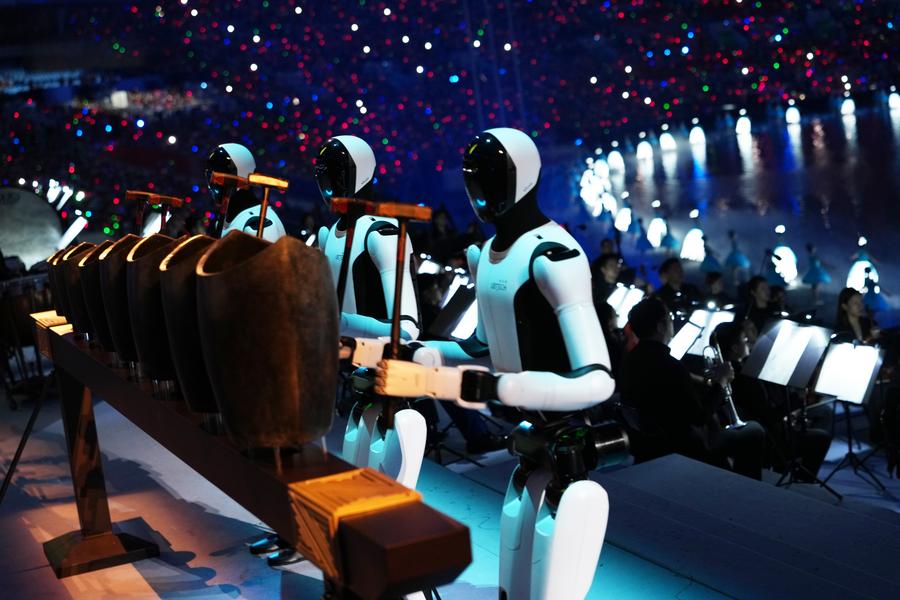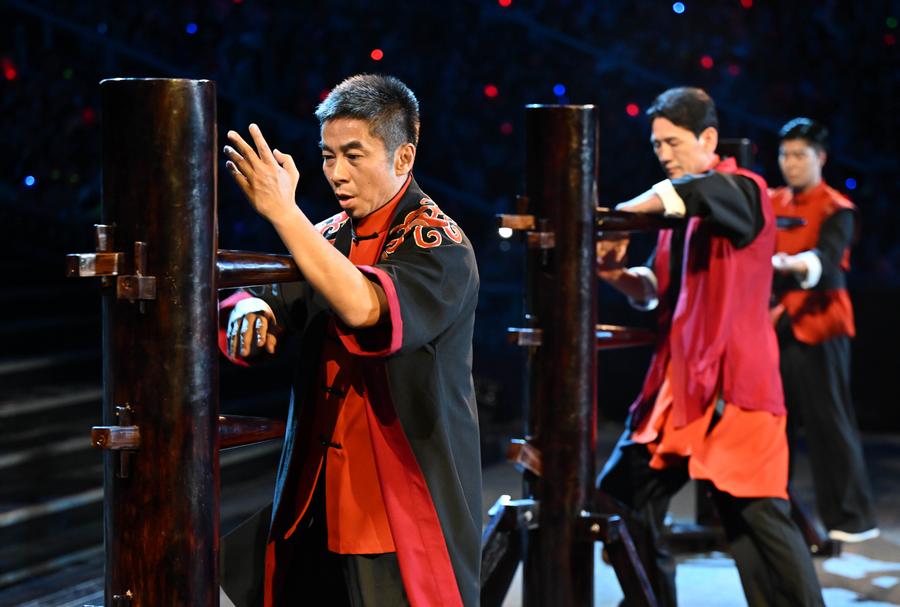
A chime rang out into the night sky over the Guangdong Olympic Sports Center in Guangzhou, the capital of Guangdong province, to signal the start of the proceedings, as three fully autonomous humanoid robots struck eight bronze chime bells modeled on those unearthed from the nearby tomb of an ancient Nanyue King.
The robots, representing China's new quality productive forces, presented a musical dialogue spanning more than two thousand years to officially begin the 75-minute, culturally and technologically rich opening ceremony of the 15th National Games on Sunday evening.
Themed "Shared Roots, Shared Heart, Shared Dream", the ceremony combined the heritage and modern spirit of the Greater Bay Area through music, dance and digital technology.
Iconic landmarks such as Hong Kong's Victoria Harbour, the Ruins of St Paul's in Macao and Guangzhou's Canton Tower were brought to life through projections.
The first chapter, "Shared Roots", traced historical ties among the three regions.
Facing eight chimes, or goudiao, the three robots — one each to represent Guangdong province and the special administrative regions of Hong Kong and Macao, the historic cross-boundary hosts of the Games — played caiyunzhuiyue, or Colorful Clouds Chasing the Moon. The recital was accompanied by a dance performance.
It marks the first time that a robot has opened a national sports event of this scale, and the first time globally that one has played a two millennia-old musical instrument.
The chimes, dating back to the Western Han Dynasty (206 BC-AD 24), became an essential part of the event, when its artistic directors decided to begin by highlighting the host regions' traditional culture.
"At its very beginning, we felt it was essential to start with traditional culture, especially that of southern China — this is how the millennia-old bronze instruments came to mind," said Chen Weiya, artistic director of the Games' opening ceremony.

However, it was not such an easy task to get the three robots — a leading advancement in artificial intelligence — to simultaneously play a melody on the ancient bronze instruments.
"The difficulty of achieving the performance was far beyond our imagination, and our completion of it involved gradually perfecting the process step by step," said Chen.
This performance symbolizes how China is driven by innovation in the new era to bring traditional culture to life, according to Chen.
"The aim of having humanoid robots play ancient bronze instruments is to make history tangible and culture palpable, thus revitalizing its profound emotional impact on audience," said Chen.
"The deep integration of ancient culture and technology is also a testament to the continuous advancement of China's comprehensive strength and humanistic ideals," said Chen.
ALSO READ: National Games start new chapter
The 1.76-meter-tall Walker S2 robot was developed by Ubtech Robotics, a leading company in the sector based in the Guangdong tech hub of Shenzhen. It features an intelligence system designed specifically for industrial humanoid robots that has enabled breakthroughs in individual autonomous operation and group collaboration.
During the performance, the robots utilized their full-body force-position hybrid control technology, which has already been applied in industrial scenarios, in combination with a high-precision visual recognition system.

The technology enabled it to achieve millimeter-level striking precision and millisecond-level motion synchronization, helping precisely and autonomously activate the unique tones of each instrument with stability and force comparable to that of human musicians.
In addition to the groundbreaking performance, the robots will also be deployed to provide intelligent services at various Games locations, including the competition venues, the Main Operations Center and the Main Media Center.
The second act highlighted Lingnan culture, from Cantonese Opera to Wing Chun kung fu. Augmented reality elements accompanied the Guangdong Lion Dance, and VR and AR technology presented a dragon boat race.

Using artificial intelligence, AR, VR and embodied robotics, the production team presented the concept of "bringing the sea into the venue". On the 5,000-square-meter stage, technology enabled over 3,000 performers to create the visual effect of thousands.
"In the past, large-scale events like this required many performers," said Meng Ke, executive director of the opening ceremony.
"With technological advances, we can now create powerful effects with far fewer people and greater efficiency."
The final segment brought together performers from across the Greater Bay Area, including a special appearance by Hong Kong pop singer Andy Lau Tak-wah and, of course, the cauldron lighting.

The Games' torch relay emphasized collaboration and innovation. The flame originated from combustible ice collected 1,522 meters beneath the South China Sea.
Using a ship-based photovoltaic power generation system, the combustible ice was successfully ignited remotely on the seabed, marking the first time in the history that a "source flame" has originated from the ocean floor.
"Apart from using a small amount of necessary electrical energy, the entire ignition process did not produce any additional carbon dioxide emissions," said Peng Gaofeng, deputy commander at the Games' opening ceremony command center.
Peng described the cauldron tower as a dynamic urban art installation, noting: "This design aims to embody the concept of a green sports event through the deep integration of art and technology, making the presentation of the cauldron tower more environmentally friendly."
The opening ceremony was attended by International Olympic Committee President Kirsty Coventry and IOC honorary president Thomas Bach.
ALSO READ: Xi meets IOC chief and its honorary president
"The ceremony was an amazing blend of culture, technology and sport," Coventry said.


